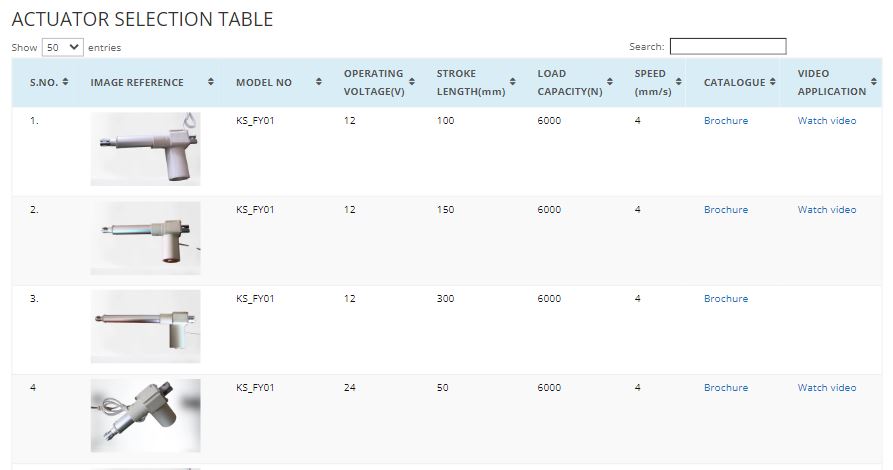Introduction: Actuator play a crucial role in converting energy into mechanical motion, making them vital components in various industries and applications. However, with a wide range of actuators available in the market, selecting the right one can be a daunting task. To simplify the process, many engineers rely on selection tables. In this blog post, we will delve into the world of actuators and explore how to effectively utilize a selection table to make an informed decision.
Understanding Actuators:
Before diving into the selection process, it’s essential to have a solid understanding of actuators and their functionality. Actuators are devices that generate mechanical motion or force in response to an electrical, hydraulic, pneumatic, or thermal input. They come in different types, including electric, hydraulic, pneumatic, and piezoelectric actuators, each offering distinct advantages and suitable for specific applications.
Actuator Selection Table:
A selection table is a valuable tool that provides a structured approach to evaluate and compare various actuators based on key parameters such as force, speed, precision, power requirements, and environmental factors. By using a selection table, engineers can narrow down their options and make an informed decision based on the specific requirements of their application.
Here is the Secretion Table Link : https://electricactuator.in/#ACTUATOR_SELECTION_TABLE
Step 1: Identify Application Requirements:
The first step in utilizing a selection table is to clearly define the requirements of your application. Consider factors such as:

- Load Characteristics: Determine the weight, size, and motion profile of the load the actuator will be required to move.
- Speed and Travel Requirements: Define the desired speed and travel distance of the actuator to ensure it can meet the application’s needs.
- Precision and Accuracy: Assess the level of precision and accuracy required for the application. Some applications, such as robotics or medical devices, demand high precision.
- Environmental Factors: Consider the operating environment, including temperature range, humidity, presence of contaminants, and any specific certifications or standards that need to be met.
Step 2: Evaluate Actuator Type:
Once you have identified the application requirements, familiarize yourself with the different types of actuators available. Understand the pros and cons of each type in relation to your specific application. Some key points to consider include:
- Electric Actuators: Electric actuators offer precise control, high force capabilities, and a wide range of speed options. They are suitable for applications that require accuracy, repeatability, and programmable control.
- Hydraulic Actuators: Hydraulic actuators provide high force capabilities and can handle heavy loads. They are commonly used in applications that require high power and robustness, such as industrial machinery and construction equipment.
- Pneumatic Actuators: Pneumatic actuators are known for their simplicity, cost-effectiveness, and rapid response times. They are widely used in applications requiring quick and repetitive motion, such as automation systems and valve control.
- Piezoelectric Actuators: Piezoelectric actuators offer precise motion control at a small scale. They are commonly used in applications such as nanopositioning, scanning microscopy, and microfluidics.
Step 3: Utilizing the Selection Table:
Once you have a good understanding of the application requirements and actuator types, it’s time to employ the selection table. The selection table typically consists of various columns representing different actuator parameters, and the rows correspond to different actuator models or specifications.
Compare the performance of various actuators based on the parameters important for your application. Consider factors such as maximum force, speed, precision, power consumption, and environmental compatibility. Assign a weightage to each parameter based on its importance to your application.

